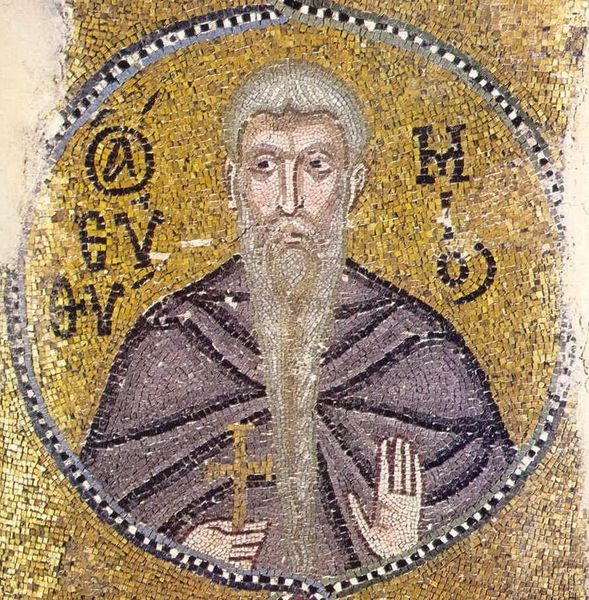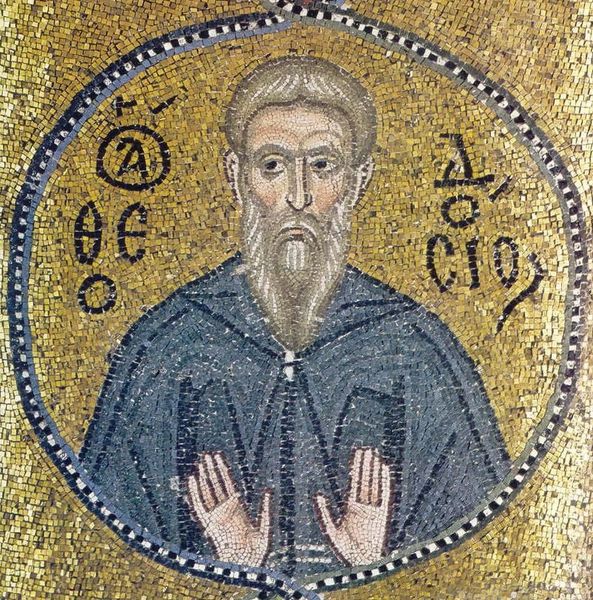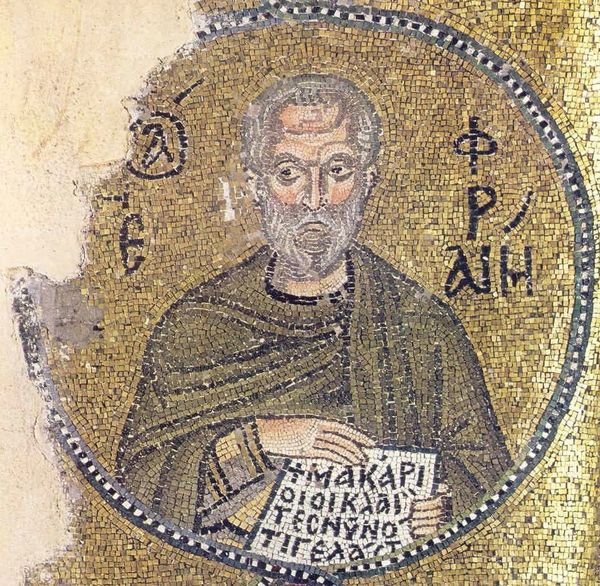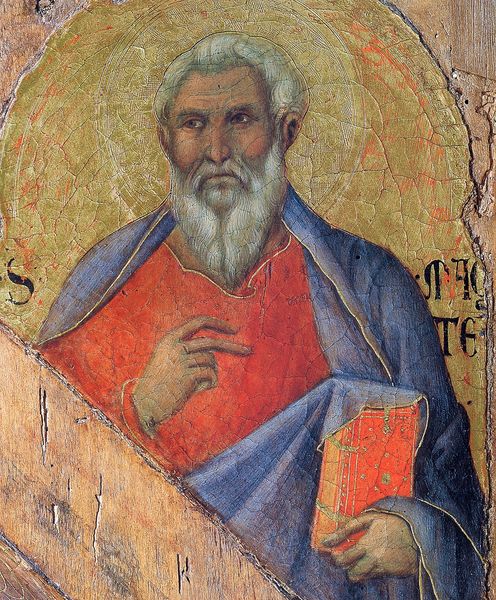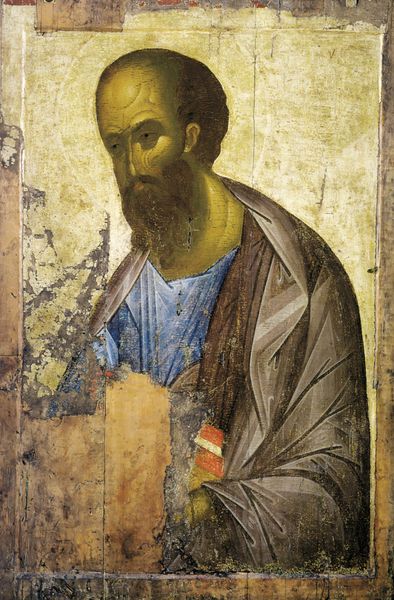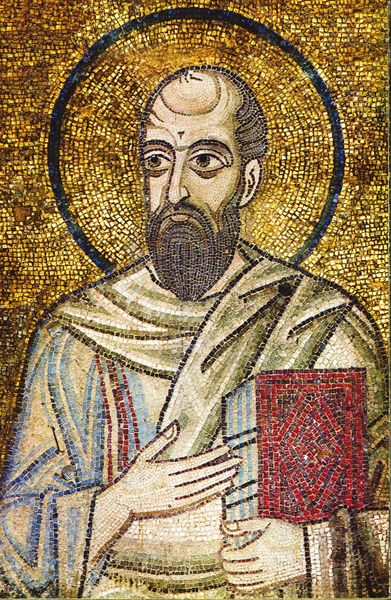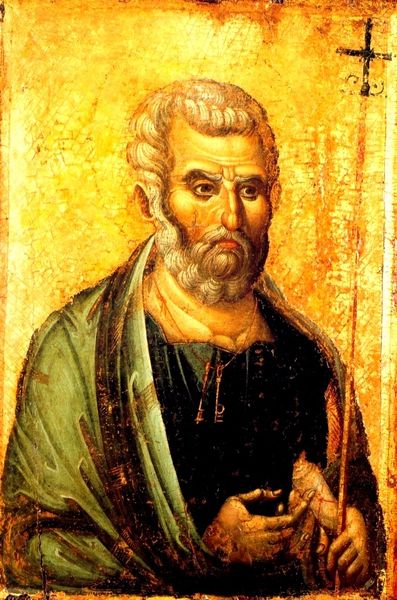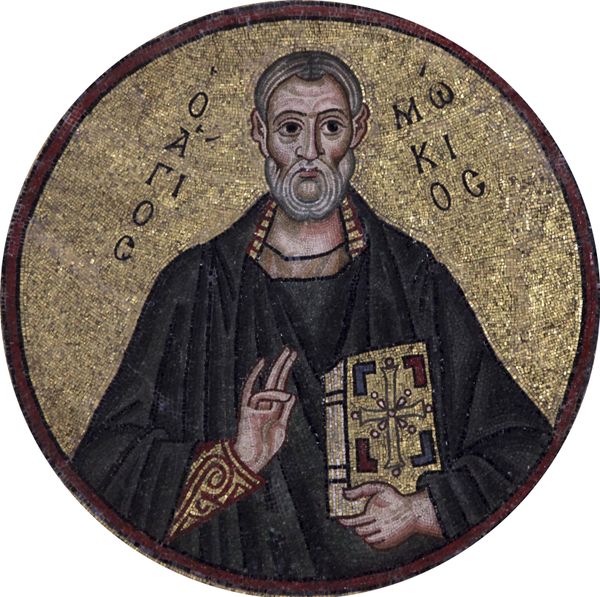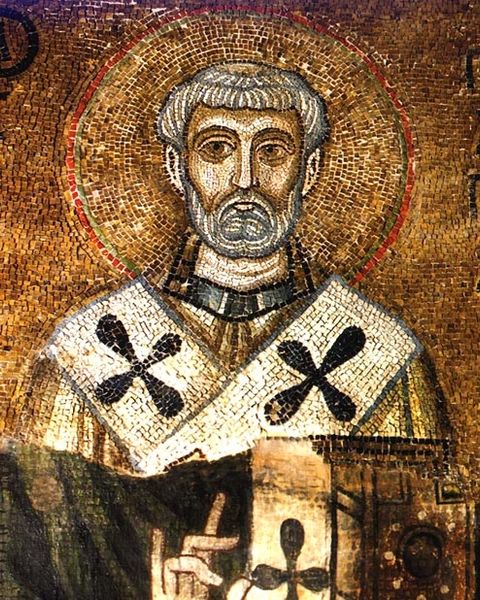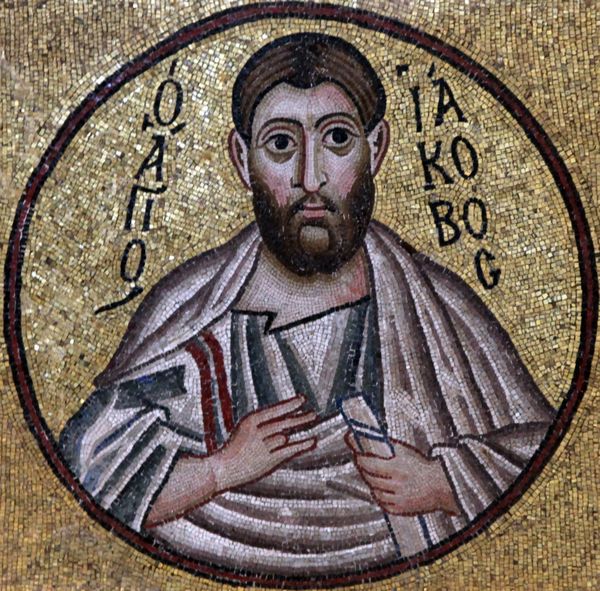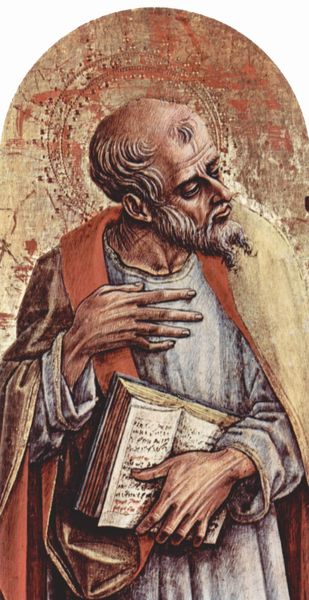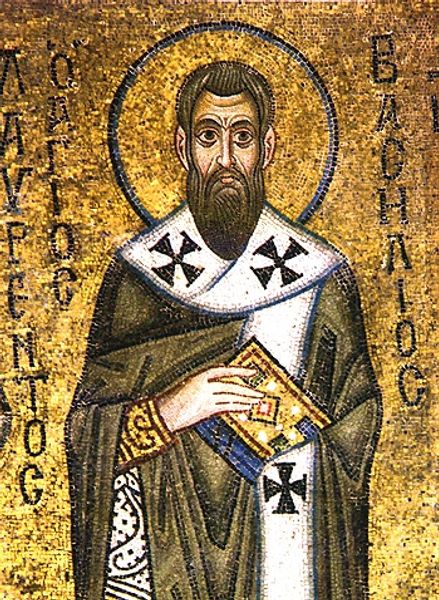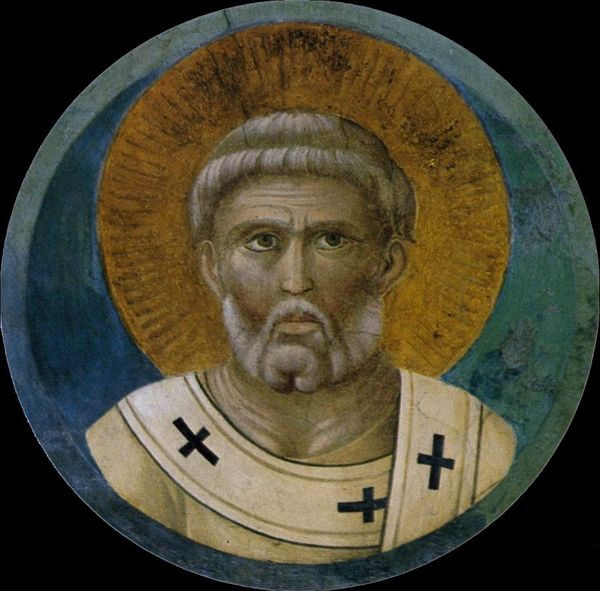
mosaic
#
portrait
#
mosaic
#
byzantine-art
Copyright: Public domain
Curator: Here we have a stunning example of Byzantine artistry: a mosaic icon dating back to 1056. It represents Saint Theodore the Studite, and it’s located at the Nea Moni of Chios, in Greece. Editor: The first thing that strikes me is the gaze – direct, intense, unwavering. Despite the aged medium and visible wear, there's an undeniable power in those eyes. What’s interesting here is the use of mosaic tiles, arranged meticulously to define his features. It also transmits this overall sense of steadfastness, perhaps meant to signal spiritual authority. Curator: Absolutely. Theodore the Studite was a significant monastic reformer who stood against imperial power, advocating for the Church's independence. Understanding this piece involves seeing beyond a religious portrait: his struggles provide key lenses for interpreting power structures of his time. The halo signifies sainthood, but his placement within a monastery—a site of potential social upheaval—adds depth to the meaning of this work. Editor: The symbolic weight is palpable. Beyond the gold background signaling divine presence, note the carefully rendered garments. The dark hues communicate authority, as does the contrast with the surrounding light of salvation. Then look closer at the slight imperfections: the way some tiles are missing or slightly misaligned. These aren't flaws, but physical evidence of survival, making visible cultural memory and the endurance of belief itself. Curator: Agreed. It's about historical persistence too. How are orthodox beliefs passed from generation to generation, who makes that determination, and for what reason? We’re encouraged to remember the historical and sociopolitical context of the work’s origins to reveal how it's still impactful in modern life. It brings the subject’s story forward, making it easier for audiences to comprehend. Editor: I see it primarily as an effort to convey eternal verities in an imperfect, very human manner. The symbolism layered with careful artistry, aiming at an almost primal emotional connection. The piece becomes a visual shorthand for values it wants to communicate. It's about enduring meaning etched in stone—literally! Curator: Which underscores the need to ask difficult questions about social endurance and human resistance, I suppose. The piece really showcases the intersection between religious devotion and complex political reality. Editor: Ultimately it’s a testament to survival – both physical and spiritual. A visual echo that resonates across time.
Comments
No comments
Be the first to comment and join the conversation on the ultimate creative platform.
